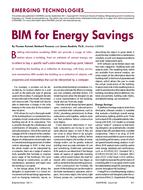Click here to purchase
Please note,this product is only available for purchase outside the United States andCanada. U.S. and Canada customers should instead purchase the 2018 International Green Construction Code (IgCC).Standard 189.1 provides totalbuilding sustainability guidance for designing, building, and operatinghigh-performance green buildings. From site location to energy use torecycling, this standard sets the foundation for green buildings by addressing sitesustainability, water use efficiency, energy efficiency, indoor environmentalquality (IEQ), and the building’s impact on the atmosphere, materials andresources. Standard 189.1 comprises the complete technical content of theInternational Green Construction Code® (IgCC).The standard provides minimumrequirements for siting, design, construction, and operation ofhigh-performance green buildings to (1) balance environmental responsibility,resource efficiency, occupant comfort and well being, and communitysensitivity, and (2) support the goal of development that meets the needs ofthe present without compromising the ability of future generations to meettheir own needs.Thisstandard provides minimum criteria that apply to new buildings and their systems,new portions of buildings and their systems, and new systems and equipment inexisting buildings. The provisions of this standard do not apply tosingle-family houses, multi-family structures of three stories or fewer abovegrade, manufactured houses (mobile homes) and manufactured houses (modular), orbuildings that use none of the following: electricity, fossil fuel, or water.Highlightsin the 2020 edition include:Compliance. ASHRAE/ASHE Standard 189.3, Design,Construction, and Operation of Sustainable High-Performance Health CareFacilities, has been added as a compliance path for qualifying buildingprojects.General. A new table ofjurisdictional options has been added to help guide jurisdictions through theiroptions for adopting the IgCC. A new informative Appendix L also provides alist of requirements that align with LEED prerequisites or are aligned withLEED credits that are attained by a large percentage of projects.SiteSustainability(Section 5) requirements for outdoor lighting, electric vehicle charginginfrastructure, and cool roofs were updated.Water UseEfficiency (Section 6) was modified, with new requirements for piping in hot waterdistribution systems and modifications to the existing cooling towersrequirements.Energy Efficiency(Section 7) wasupdated to maintain consistency with ANSI/ASHRAE/IES 90.1. New metrics forevaluating equipment efficiency, the Fan Efficiency Index (FEI) and PumpEfficiency Index (PEI), were introduced. Various requirements were enhancedwithin this section, including dwelling unit lighting controls, renewableenergy (with cases in which PV systems are required), fault detection anddiagnostics (FDD), traction elevators, high-capacity service water heatingsystems, and occupancy sensor-based controls.Energy Efficiency (Performance Approach, Section 7.5) has beengreatly expanded in terms of renewable energy requirements and the resourcesavailable to help determine compliance, including a new informative appendix toassist in calculating source energy and CO2e emission factors basedon local data. IndoorEnvironmental Quality (Section 8) provisions were strengthened. Requirements related to paints andcoatings, as well as composite wood materials, are now more focused on limitingVOC and formaldehyde emissions into the space.New requirements to prevent ozone emissions from air cleaning deviceshave been added.Lighting quality andview requirements have also been strengthened.Materials andResources (Section 9) was updated, notably the total waste provisions fornew construction.Constructionand plans for operation (Section 10) wasreorganized for clarity, ease of compliance, and alignment with relatedstandards.
Product Details
- Published:
- 2020
- ANSI:
- ANSI Approved
- Number of Pages:
- 198
- Units of Measure:
- Dual
- File Size:
- 1 file , 2.3 MB
- Redline File Size:
- 2 files , 14 MB
- Product Code(s):
- D-86616


